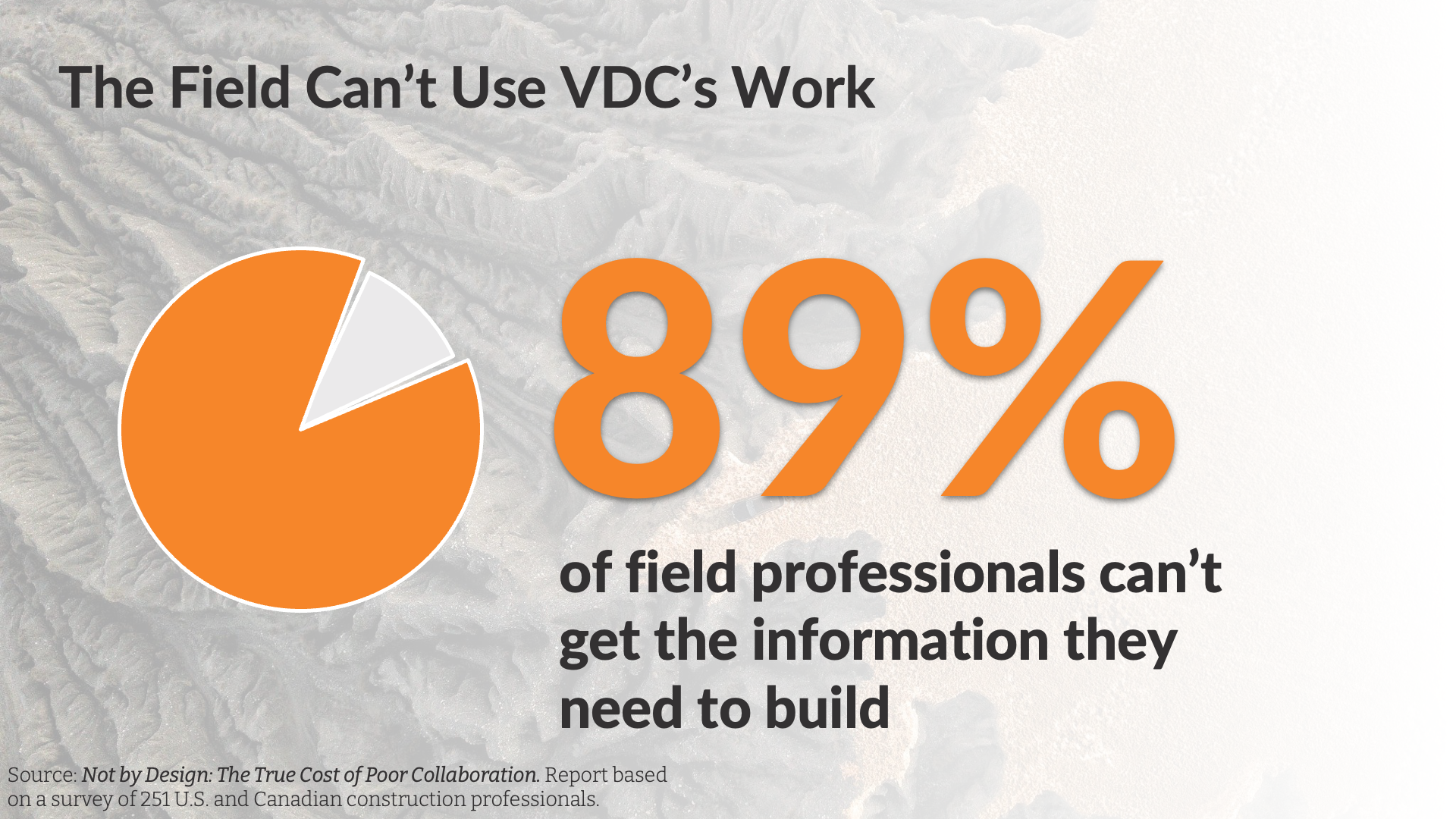The Bottleneck That’s Costing You Time, Money, and Trust
.png)
Historically, the construction industry has worked under a brutal constraint:
Every project is a custom product.
Every project is unique. A never-built-before design. A new site. A new team. Unpredictable conditions.
Which means: you only get one shot to get it right.
And when you don’t? The consequences are real. It costs money, time, reputation, and trust between project partners. In the worst cases, people get hurt. Companies go under.
Even when the impact is “just” rework, it’s expensive—not just because it burns labor hours and materials, but because it throws off sequencing, introduces chaos, and kills productivity. It turns the working environment on the jobsite toxic, undermining trust and turning teams against themselves.
But here’s the good news: For the first time in construction history, we can practice.
Over the last two decades, the industry has innovated a powerful new workflow: Virtual Design and Construction (VDC).
With VDC, we can build the project virtually before we build it physically. We can simulate installation. Detect clashes. Solve problems. Sequence smarter. Prototype. Plan.
In short, we now get a practice run on the project. And the learning from that practice lives in a single source of truth: the coordinated model—a digital asset that tells us exactly how to build a defect-free project, on time and on budget.
VDC is probably one of the most important innovations in construction in decades.
So what’s the problem?
That information never makes it to the people who actually build the job.
The model is digital. But construction happens in physical space—with physical tools, physical materials, and physical labor. Those folks aren’t spending their time in the model. If they were, it wouldn’t be true that 89% of field professionals can’t get the information they need to build:

They’re working off paper plans. Maybe digital (but static) PDFs. Notes taped to the gang box. And layout that was performed by hand with a chalk box and a tape measure. It’s in this final handoff—from digital model to boots on the ground—that we see an information bottleneck that sets the rest of the project up for failure.
This bottleneck is so acute, it could be called a full disconnect. The amount of information that’s lost between the model and the field is… almost all of it.
And nowhere is that more obvious than in layout.
Layout: Where risk enters the job
Layout is the moment design becomes construction. It's when information becomes action. And it’s one of the riskiest, least coordinated parts of the entire workflow.
On most jobs, layout is:
- Done manually with a tape measure, a chalk box, and a Sharpie marker
- Based on printed 2D plans — not the model
- Performed trade-by-trade, by separate teams with no visibility into what others are doing
- Aligned to different systems of control
Each trade lays out their work in isolation. There’s no single source of truth. No guarantee that dimensions align. No ability to see the bigger picture.
And if even one thing is off?
That mistake gets built into the project in a way that impacts every trade that follows, getting harder and harder to fix with each one.
It’s now a $25,000 change order. Or a week of schedule delay. A failure to perform to contract. A warranty claim. A building failure.
The schedule is lying to you
Look at how layout is built into most projects.

The status-quo layout workflow is not a real strategy—it’s a series of blind handoffs. Each one is a chance for something to go wrong.
We’ve seen projects where:
- Trades show up and realize their layout conflicts with what’s already built
- Crews spend hours demoing and redoing work that was “right” per the layout
- Work stops while RFIs bounce back and forth for weeks before a decision gets made
And by then, the schedule is at risk, carefully-orchestrated trade stacking plans are ruined, and the big question at the jobsite meeting is, “How did we get here?”
The bottom line is, you don’t see layout risk on your project schedule. But it is a big, fat, expensive critical-path bar on the Gantt chart.
Layout is an information problem. But it’s also a leadership problem.
The model contains everything you need to get it right. But unless someone takes ownership of translating that information to the field, the risk will persist.
There’s been hope that mobile model viewers or AR would solve this—tools that let field teams “fly the model.”
But this misses the point.
Field teams can’t build directly from digital models. They must transcribe the information into the real world, so they can align and construct their work in physical space. That’s why layout has always meant making marks on the floor.
The leading contractors today rethink layout entirely.
They’ve moved from manual to Automated Layout.
They’re doing layout for all trades at once—using the coordinated model as the source of truth.
They’re bringing VDC all the way to the slab, finally connecting the flow of design information to the field in a way field teams can actually use.
And most importantly, they’re not only participating but leading the layout process in a collaborative effort with their trade partners—a complete U-turn from the traditional approach of leaving layout to the trades in isolation.
Layout is the final handoff for VDC. Own it, and you unlock the true value of the investment in VDC.
Multi-Trade Layout isn’t about robots. It’s about collaboration. It’s about confidence. It’s about knowing that what you’re building is what was designed. It’s about making the extraordinary innovation of VDC count as a practice-run on construction projects.
This is part 1 of our series on Multi-Trade Layout Best Practices. Over the next several weeks, we’ll be diving deep on the Multi-Trade Layout workflow that’s changing construction. We’ll cover everything from big-picture strategy to detailed tactics.




